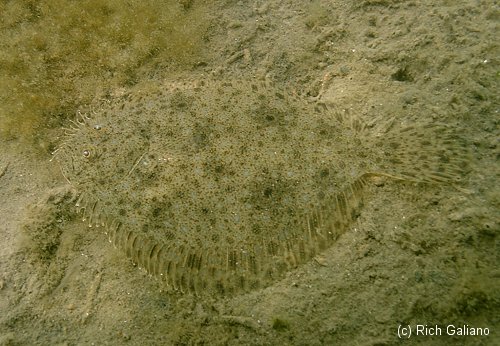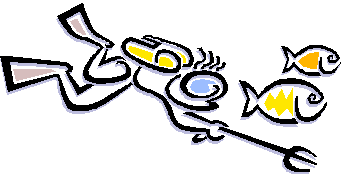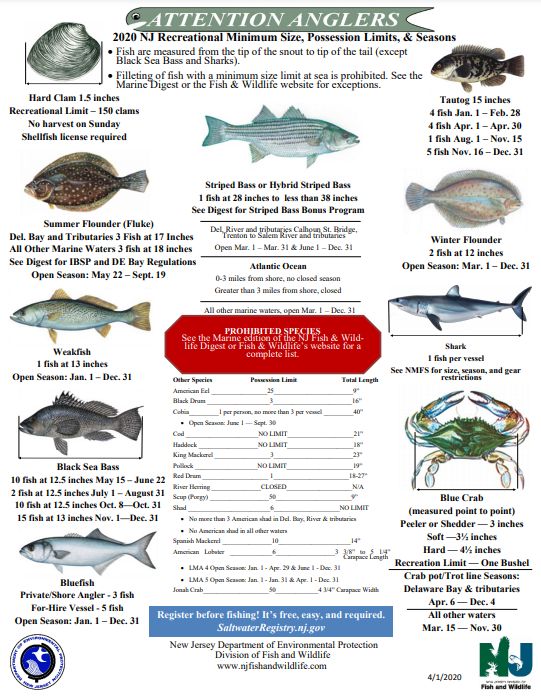Summer Flounder (Fluke)
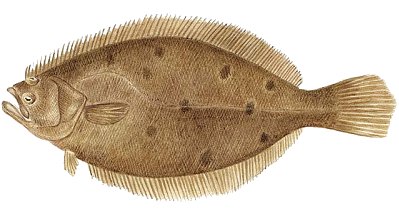
Paralichthys dentatus
to 37 " and 20 lbs.
usually much smaller
Profile by
Paul G. Scarlett
Principal Fisheries Biologist
Bureau of Marine Fisheries
Range:
Estuarine and coastal waters from Nova Scotia to Florida. Most abundant between Cape Cod, Massachusetts and Cape Fear, North Carolina.
Size:
Summer flounder can grow to sizes of over 30 inches and can weigh more than 20 pounds. The sportfish state record was landed in 1953 and weighed 19 pounds, 12 ounces. Due to tremendous sport and commercial fishing pressure, summer flounder rarely survive long enough to achieve the maximum size. Females grow faster than males, and juvenile summer flounder can reach a length of 9 to 12 inches during their first year. Fourteen-inch summer flounder are generally 2 or 3 years old and weigh about a pound. A twenty-inch summer flounder is usually 4 years old or older and weighs about 3 pounds.
Food and Feeding:
Summer flounder are opportunistic feeders, with vision playing a primary role in prey selection and capture. The fish lies on the bottom partly concealed by sand and partly by its coloration, which can be changed to match the surrounding environment. When suitable prey appears, it rushes out and devours the victim. Summer flounder are swift swimmers and they sometimes pursue schools of small fish to the surface. Common prey of summer flounder include sand shrimp, Winter Flounder, blue crab, Bay Anchovy, Atlantic Silversides, squid, and killifish.
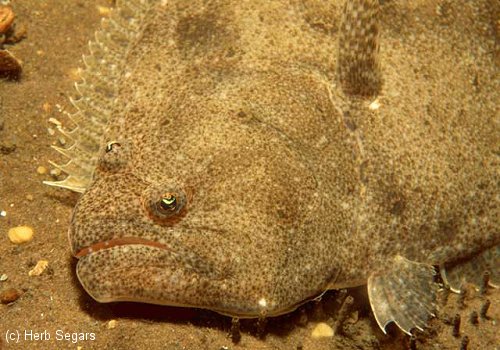
This is a left-eyed flounder. The five spots in an "X" pattern near the tail are one distinguishing feature, as well as the large toothy right-pointing mouth and widely-spaced eyes. Compare this headshot with the Winter Flounder.
Migration:
Summer flounder normally inhabit near-shore coastal and estuarine waters during the warmer months of the year and move offshore in depths of 100 to 500 feet of water during the fall and winter. A northward drift is also exhibited whereby fish return to more northern estuaries in successive years. This results in a higher occurrence of larger, older fish in the more northern parts of its range.
Habitat:
Estuaries and inshore oceanic water habitats are critically important to the life cycle of summer flounder. These areas are utilized for summer feeding grounds by adults and for nursery grounds by juveniles. Summer flounder prefer hard, sandy bottom, but can be found in salt marsh creeks and seagrass beds with muddy or silty substrate.
Spawning:
Spawning occurs during the fall and winter while the fish are moving offshore or at their wintering grounds. Offshore movement and spawning occur earlier in the northern part of the range. Larvae and postlarvae drift and migrate inshore, entering coastal and estuarine nursery areas from October to May. Most summer flounder are sexually mature by age 3. Females can release as many as 4,000,000 eggs with egg numbers directly related to fish size. Summer flounder are serial spawners, with egg batches being continuously matured and shed during a protracted spawning season.
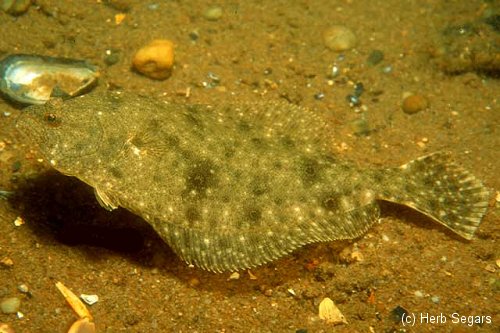
Unlike most other flatfishes, Fluke are not afraid to swim up into the water column, and can often be found perched on rocks and ledges well above the bottom.
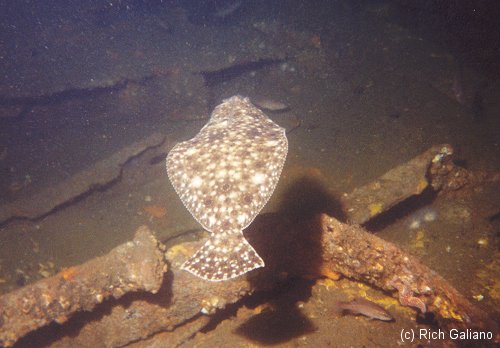
Recreational and Commercial Importance:
Summer flounder is a highly prized food fish sought by both commercial and recreational fishermen. The majority of landings from the commercial fishery are taken by otter trawl during the winter when summer flounder are well offshore. During the 1980s, commercial fishermen landed an average of 4,700,000 pounds per year in New Jersey. Beginning in 1993, commercial landings have been controlled by a quota, with New Jersey commercial fishermen limited to 1.9 million pounds in 1998. This fish is also one of the mainstays of the sport fishery along the Atlantic coast, accounting for a large catch from bridges, jetties, and small boats as well as party and charter boats.
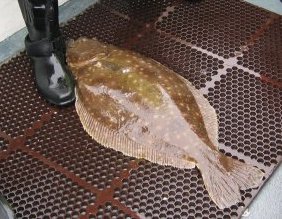
Fishing Techniques:
Summer flounder sport fishing occurs mainly within one mile of the coast, with the greatest activity in and around inlets. They can be caught while still fishing, drift fishing, casting from the beach, and slow trolling. A common fishing outfit would include a five to six-foot rod and a conventional reel filled with 10 to 20-pound test line. Summer flounder can be taken on large, long-shanked hooks attached to a two to three foot leader, fished singly or in tandem. Because of their large mouth and aggressive nature, large hooks (4/0-6/0) work well and reduce the chances of gut hooking smaller fish that may be below the legal size limit. Three-way swivels and sinkers or weighted bucktails complete the rig. The use of live bait is common but summer flounder are also taken on squid, clams, jigs, small spoons, and spinners. Although not as strong a fighter per pound as some other sport fish, summer flounder provide lively action, especially on light tackle. Recreational harvest in New Jersey is now controlled by size limits and bag limits. Since size and bag limits change annually, anglers must check current regulations.
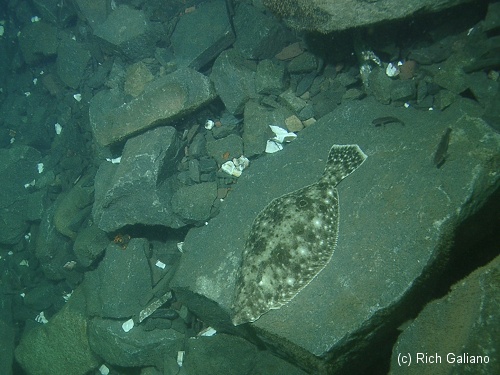
Fluke can often be found perched high above the bottom on rocks and other structure. This is completely unlike Winter Flounder, which are never found off the bottom.


References:
Able and Kaiser (1994); Bigelow and Schroeder (1953); Daiber, et al. (1976); Geiser (1977); Ginsburg (1952); Leim and Scott (1966); Long and Figley (1982); MAFMC (1990); Scarlett (1982); Shreaves ( personal communication )
This article first appeared in New Jersey Reef News - 1999 edition


